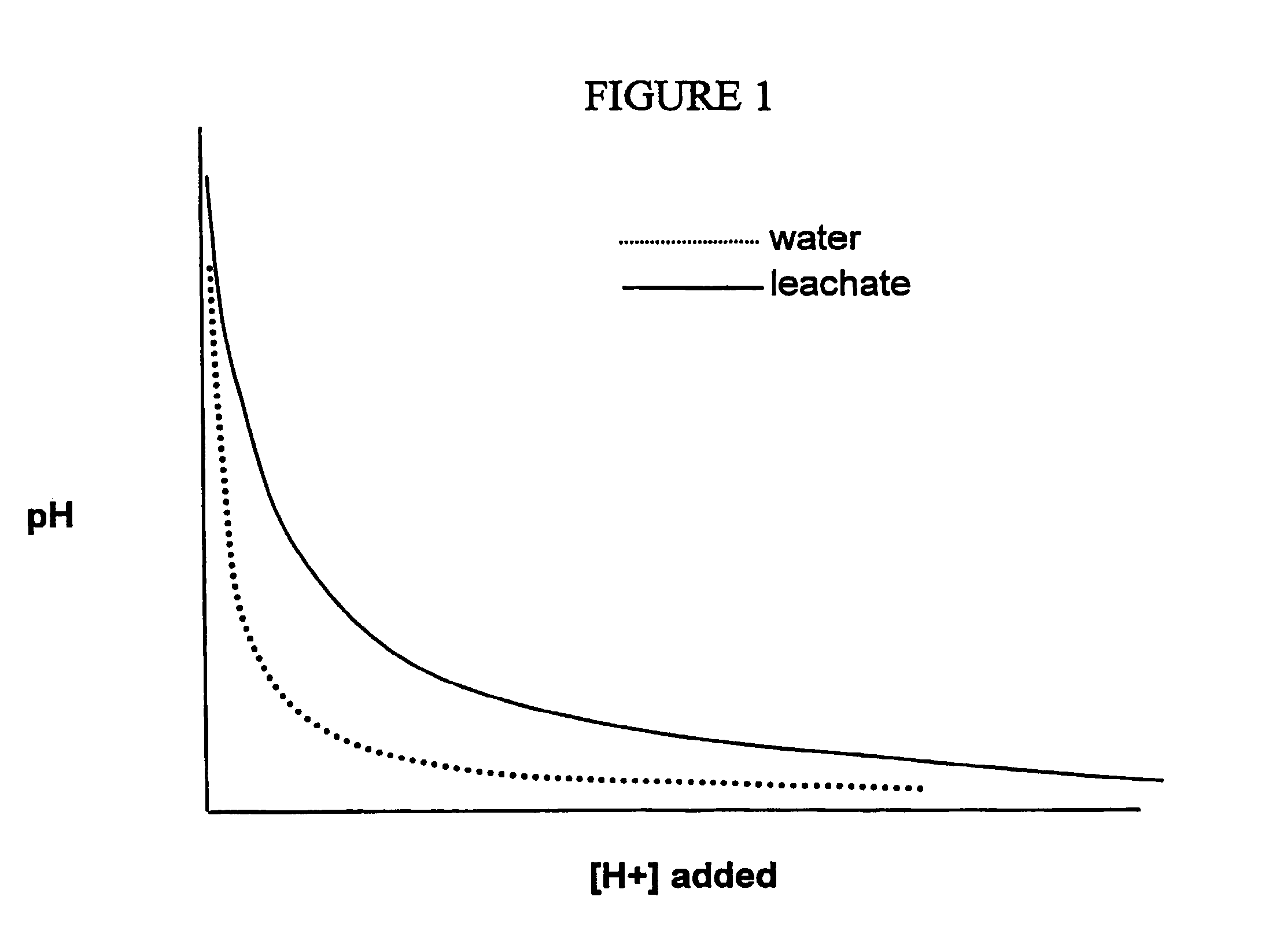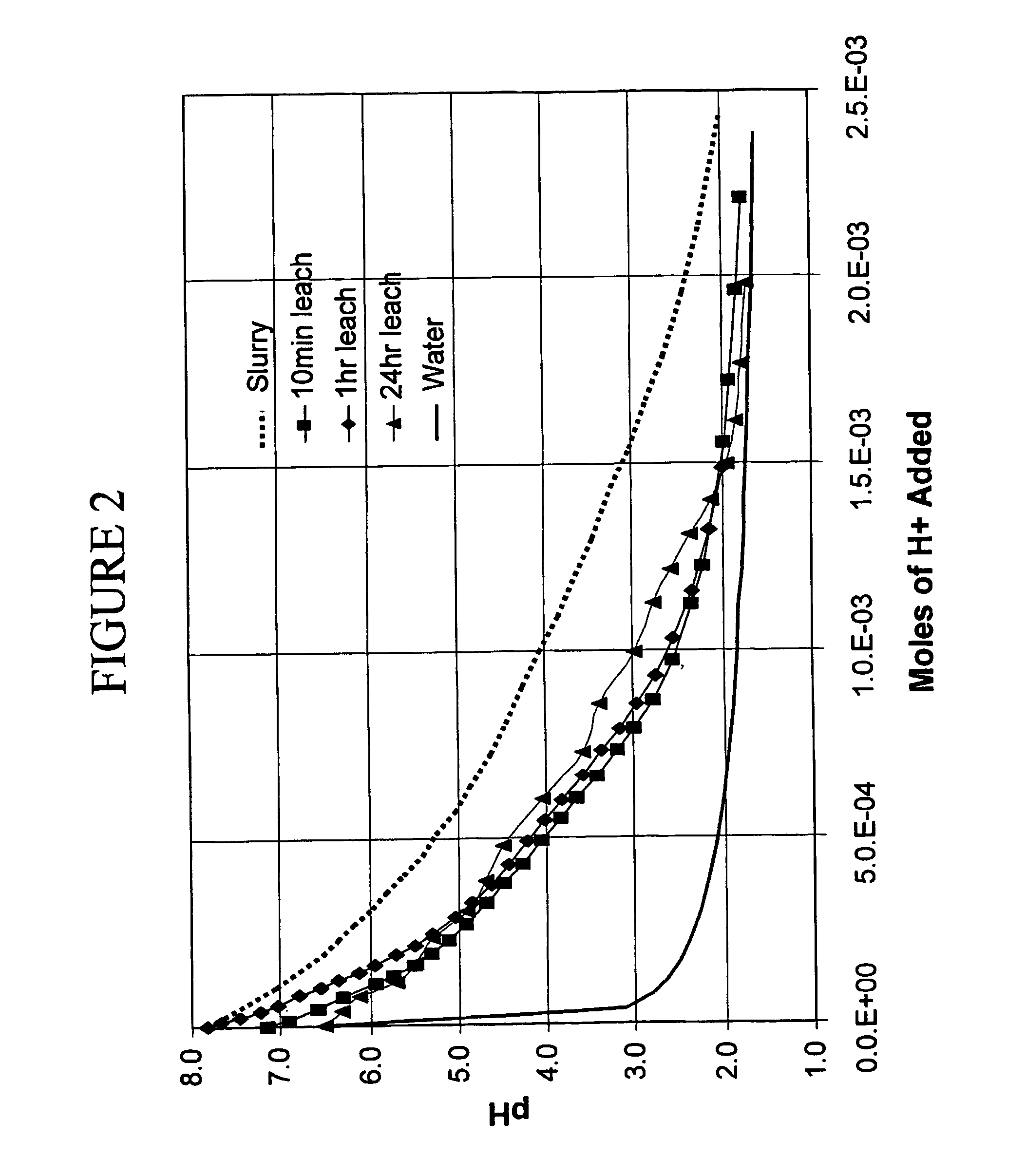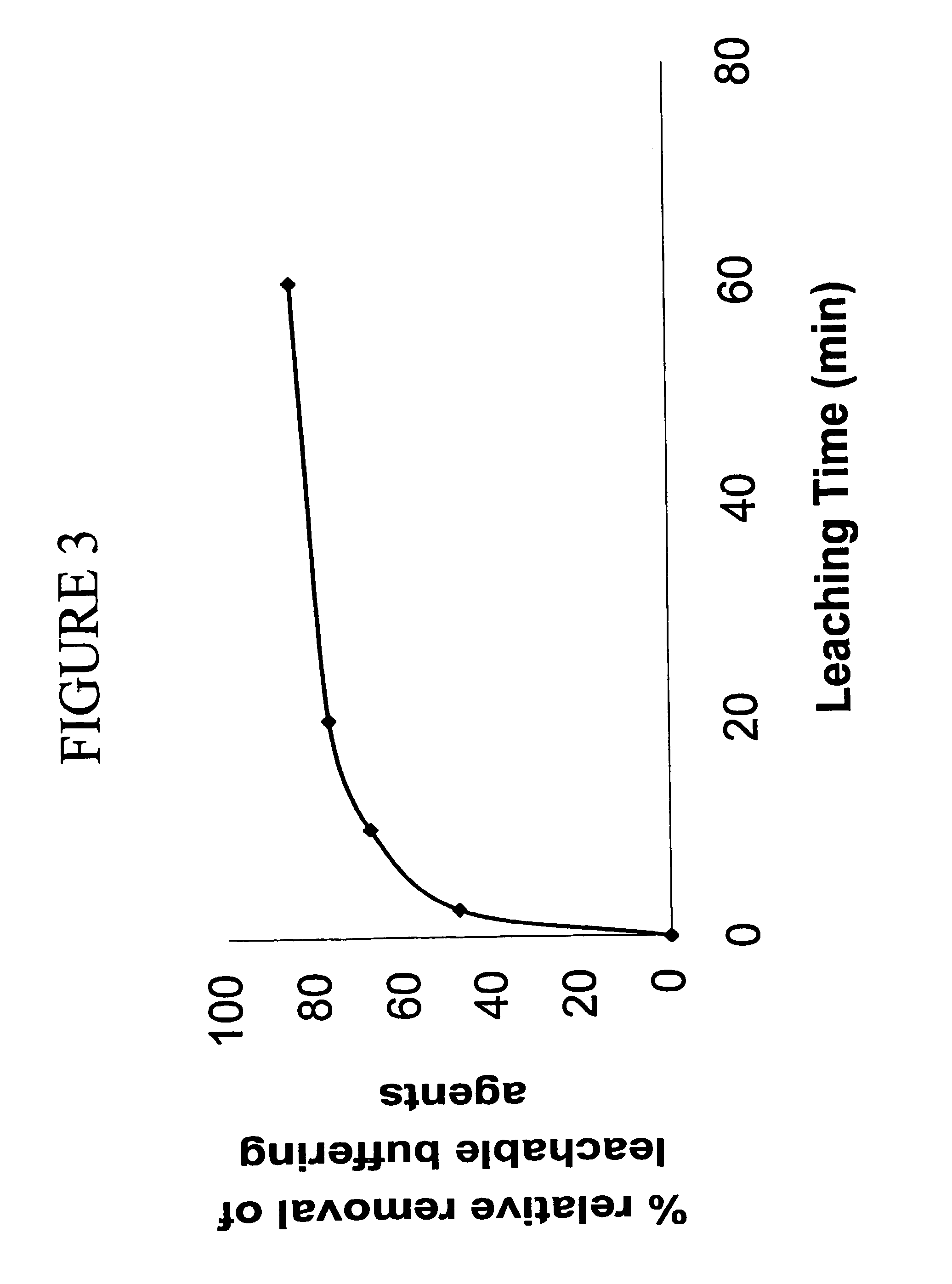Method of processing lignocellulosic feedstock for enhanced xylose and ethanol production
a technology of xylose and ethanol, which is applied in the field of processing lignocellulosic feedstock for enhanced xylose and ethanol production, can solve the problems of poor glucose from cellulose yield, the acid recovery, and the specialized construction materials required for the apparatus to carry out this process, and achieves the effect of high quality
- Summary
- Abstract
- Description
- Claims
- Application Information
AI Technical Summary
Benefits of technology
Problems solved by technology
Method used
Image
Examples
example 1
MEASUREMENT OF AX / NSP IN FEEDSTOCKS
[0154]The ratio of arabinan plus xylan to total non-starch polysaccharides of a given feedstock is determined based on a compositional analysis of the feedstocks. This analysis is performed, as follows:
[0155]Feedstocks examined include barley straw, wheat straw, wheat chaff, oat hulls, switch grass, corn stover, maple wood, pine wood, and three varieties of corn cobs. All are obtained locally in Ottawa, Ontario except the oat hulls, which are from Quaker Oats in Peterborough, Ontario. The feedstocks are coarsely ground in a Waring blender and then milled through a #20 mesh screen using a Wiley mill. The feedstocks are stored at ambient temperature in sealed bags until the time of use. The moisture content of small samples is 5% to 10% and is determined by drying at 100° C.
[0156]Approximately 0.2 grams of sample is weighed into test tubes, each containing 2.5 ml of 72% sulfuric acid. The tubes are vortex mixed, capped, and placed in a 40° C. water ...
example 2
Leaching and Dilute Acid Pretreatment of Lignocellulosic Feedstock
A. Leaching
[0165]Wheat straw is ground using a Wiley mill to produce particles of a size less than 20 mesh. The milled lignocellulosic feedstock is added to water at 25° C. or 80° C. for leaching. For comparative purposes an equivalent amount of Wiley milled straw is set aside as a control and processed without leaching. Leaching of the lignocellulosic feedstock is performed for 60 minutes using a mass ratio of water to lignocellulosic feedstock of 10:1. Following leaching, the leached lignocellulosic material is filtered and pressed to 50% solids content.
B. Dilute Acid Hydrolysis of Leached Feedstock
[0166]The leached lignocellulosic material (1.0 grams, total fiber) is placed in a 10 mL stainless steel reactor. A volume of 5% sulfuric acid is added to the leached feedstock to obtain a ratio of acid to leached feedstock in the range of 0.5% to 6.3% weight / weight. The reactor is sealed and placed in a 200° C. oil bath ...
example 3
Preparation of a Thoroughly Leached Feedstock.
[0173]25 grams of lignocellulosic feedstock is milled to a particle size capable of passing through 20 mesh. Leaching of the lignocellulosic feedstock is performed by combining the lignocellulosic feedstock with 10 times the volume of its maximum water carrying capacity and the slurry is stirred at 25° C. for 24 hours. After the incubation period, the leachate is removed from the leached feedstock and the feedstock is rinsed with about 2L of a water and pressed to a solids content of about 50%. The pressed, leached feedstock is a thoroughly leached feedstock.
[0174]The total leachable buffering agents of the feedstock is determined by titrating the leachate plus rinse water to pH 3 with 0.1N: H2SO4. The volume of titrant used is expressed as kg H2SO4 per tonne of dry lignocellulosic feedstock. This is a measure of the total leachable buffering agents of the feedstock.
PUM
| Property | Measurement | Unit |
|---|---|---|
| temperature | aaaaa | aaaaa |
| pH | aaaaa | aaaaa |
| pH | aaaaa | aaaaa |
Abstract
Description
Claims
Application Information
 Login to View More
Login to View More - R&D
- Intellectual Property
- Life Sciences
- Materials
- Tech Scout
- Unparalleled Data Quality
- Higher Quality Content
- 60% Fewer Hallucinations
Browse by: Latest US Patents, China's latest patents, Technical Efficacy Thesaurus, Application Domain, Technology Topic, Popular Technical Reports.
© 2025 PatSnap. All rights reserved.Legal|Privacy policy|Modern Slavery Act Transparency Statement|Sitemap|About US| Contact US: help@patsnap.com



